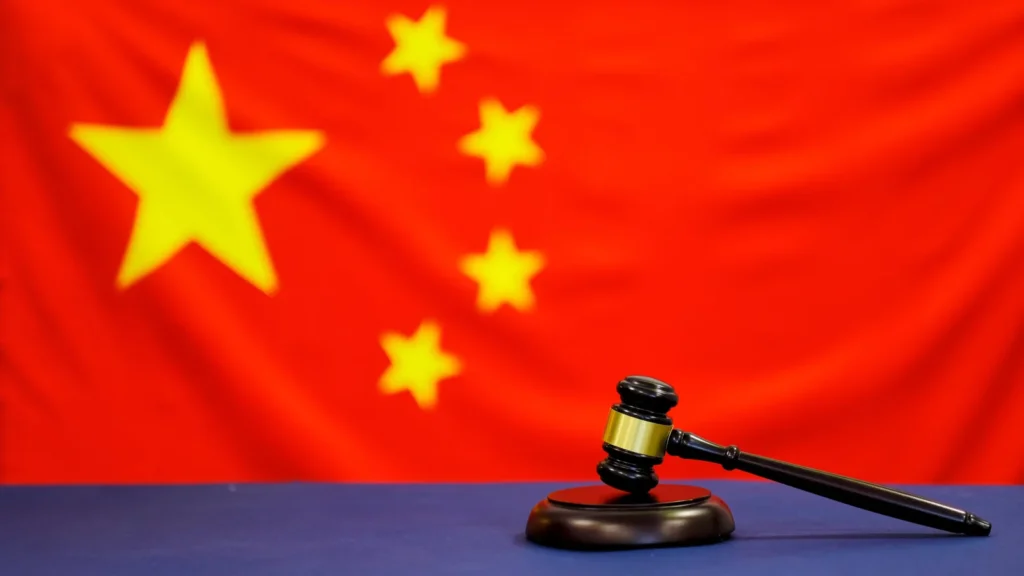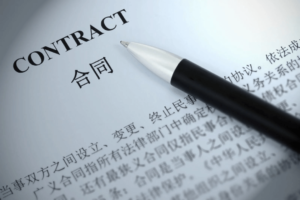In today’s globalized market, intellectual property (IP) protection is more crucial than ever, particularly in China, a leading hub for manufacturing and innovation. The country’s well-structured legal system offers robust mechanisms for safeguarding IP, making patent protection viable and essential for businesses looking to thrive in this dynamic market. This article explores the necessity of patent protection in China and outlines strategies businesses can use to protect their innovations effectively.
Table of Contents
ToggleAdvantages of China’s Effective IP Legal Framework
China has undergone significant reforms in its IP laws, aligning them with international standards and enhancing enforcement procedures. This commitment to upholding IP rights has fortified the legal framework, providing strong protections for patents registered within the country. For foreign businesses, this means a reliable and predictable legal environment in which to operate.
The Risks of Neglecting IP Protection
Despite strong laws, the sheer scale and complexity of the Chinese market pose inherent risks. Businesses that fail to protect their patents adequately might find their inventions replicated by local competitors who can produce similar goods at lower prices, thereby diluting market share and affecting the original innovator’s profitability and brand reputation.
The Role of Local Manufacturers and the Need for Vigilance
While the legal system is effective, businesses must remain vigilant, particularly when dealing with local manufacturers. These entities might have the capabilities to become competitors themselves or to manufacture for your competitors. Vigilance, alongside clear legal agreements, ensures that the boundaries of IP protection are well maintained.
Tools and Moldings Protection
Tools and moldings are critical components of many products and are especially vulnerable to replication. Protecting these assets is essential and perfectly feasible under China’s IP laws, provided businesses take proactive steps to define and enforce their rights clearly through specific contractual clauses.
Utilizing NNN Agreements in a Strong Legal Environment
In China, NNN (Non-Disclosure, Non-Use, Non-Circumvention) agreements are powerful tools for protecting IP. The Chinese legal system supports these agreements, ensuring that manufacturers or other parties cannot disclose, misuse, or bypass your proprietary information. The effectiveness of these agreements is a testament to the strength and enforceability of Chinese IP law.
Leveraging Local Legal Expertise
To maximize the benefits of China’s IP protection, foreign companies should engage with local legal experts. These professionals are well-versed in the nuances of Chinese IP law. They can help businesses navigate the patent registration process, draft ironclad NNN agreements, and take action against any infringement.
Understanding the Types of Chinese Patents
When seeking to protect intellectual property in China, it is crucial to understand the different types of patents available under Chinese patent law. Each type caters to different aspects of innovation and offers varying degrees of protection and duration. Below, we outline the three primary types of patents in China: invention patents, utility model patents, and design patents.
1. Invention Patents
Invention patents are the most common type of patent filed by entities looking to protect new or improved products or processes that involve an inventive step. This type of patent is ideal for significant technological advancements and offers the most comprehensive protection. The process for filing an invention patent is more rigorous and requires a thorough examination process. However, once granted, an invention patent provides protection for up to 20 years from the filing date, subject to annual renewal fees. This extensive period allows inventors to maximize the commercial exploitation of their innovations.
2. Utility Model Patents
Utility model patents are suitable for innovations that are not sufficiently inventive to meet the higher threshold of invention patents but still represent a new technical solution applied to a product’s shape, structure, or configuration. Often called “petty patents,” utility models are easier and faster to obtain because they require a less stringent examination process. The protection provided by a utility model patent lasts for 10 years from the filing date. This type of patent is particularly popular among small to medium-sized enterprises that seek quick protection with lower costs and less complex technological innovations.
3. Design Patents
Design patents protect the aesthetic aspects of a product, specifically the visual characteristics such as shape, pattern, or color. This type of patent is crucial for industries where the product’s appearance plays a significant role in consumer choice, such as fashion, furniture, and technology accessories. Design patents in China require a formal examination of the design to ensure it is new and significantly distinct from existing designs. The protection for a design patent lasts for 15 years from the filing date, providing substantial time to capitalize on market potential.
Choosing the Right Type of Patent
The decision on which type of patent to file depends largely on the nature of the invention and the strategic business goals. While offering longer protection and broader scope, invention patents are more costly and time-consuming to obtain. Utility models provide a quicker, cost-effective option for less complex inventions, offering a faster route to protection. Meanwhile, design patents protect aesthetic elements, which is crucial in consumer-driven markets.
When filing for any type of patent in China, it is essential to consider the specific requirements and protections offered by each to choose the best strategy for safeguarding your intellectual property effectively. Understanding these options and carefully planning your IP strategy can significantly enhance your ability to compete and succeed in the Chinese market.
Navigating Language and Format Challenges in Chinese Patent Applications
Filing a patent application in China involves unique challenges, particularly for non-native speakers, due to the requirement that all applications must be submitted in Chinese. This language barrier can significantly complicate the application process for foreign inventors and companies. Moreover, the Chinese patent system mandates that applications adhere to a very specific format, adding another layer of complexity. Understanding and navigating these requirements is crucial for successful patent registration in China.
Language Requirements
The stipulation that all patent documentation be submitted in Chinese means that accurate translation of technical documents is essential. This translation must not only be linguistically correct but also technically precise. Poor or inaccurate translations can lead to misunderstandings of the patent scope, potential rejections, or weak legal protection after the patent is granted. It is, therefore, imperative for non-native applicants to work with skilled translators who specialize in patent language and are familiar with the invention’s technical field.
Specific Formatting Rules
In addition to language complexities, Chinese patent applications must conform to a strict format that outlines how descriptions, claims, and drawings should be presented. This format is meticulously detailed in the Chinese patent law guidelines, and any deviation from these guidelines can result in the rejection of the patent application. The required format includes detailed rules on the application’s structure, types of acceptable drawings, and even the terminology that should be used in the description and claims.
By addressing these language and format challenges with thorough preparation and professional assistance, foreign applicants can enhance their chances of securing patent protection in China effectively. This approach not only facilitates smoother navigation through the application process but also ensures that the resulting patents offer robust protection for their innovations.
Conclusion
China’s commitment to enhancing its IP legal framework has made it an attractive destination for foreign investment and innovation. By understanding and leveraging this effective legal system, businesses can confidently protect their IP assets, ensuring long-term success in one of the world’s most vital markets. Adequate patent protection, coupled with the strategic use of legal tools and local expertise, allows companies to safeguard their innovations and maintain a competitive edge in China.
FAQ: Protecting Intellectual Property in China
1. Why is patent protection important in China?
- Patent protection is crucial in China because it prevents local competitors from copying or stealing inventions, designs, or processes. It helps businesses maintain competitive advantage, safeguard market share, and protect investments in research and development.
2. How effective is China’s legal system in protecting IP?
- China’s legal system has become increasingly effective in protecting intellectual property. It aligns with international standards and has robust enforcement mechanisms that support a reliable and predictable legal environment for foreign businesses.
3. What risks do businesses face without proper patent protection in China?
- Businesses without adequate patent protection in China risk having their inventions replicated and sold at lower prices by local competitors. This can lead to financial losses, diluted market presence, and a tarnished brand reputation.
4. How should businesses view their relationships with local manufacturers?
- Businesses should approach relationships with local manufacturers cautiously, ensuring that legal agreements clearly outline IP protections. There is a risk that these manufacturers could potentially compete directly or indirectly by manufacturing for competitors.
5. Why are tools and moldings important to protect?
- Tools and moldings are often essential for producing unique products and are vulnerable to replication. Protecting these assets ensures that competitors cannot easily reproduce similar goods, thus maintaining the originality and competitive edge of the product.
6. What are NNN agreements, and why are they important in China?
- NNN (Non-Disclosure, Non-Use, Non-Circumvention) agreements are crucial in China for protecting proprietary information from being disclosed, used inappropriately, or circumvented. The Chinese legal system supports them, making them effective tools in safeguarding IP.
7. How can foreign businesses effectively use China’s IP laws to their advantage?
- Foreign businesses can leverage China’s IP laws by registering their patents within the country, using NNN agreements to protect confidential information, and working with local legal experts who understand the nuances of Chinese IP law.
8. What role do local legal experts play in protecting IP in China?
- Local legal experts are invaluable in helping foreign businesses navigate the Chinese IP legal system. They can assist with patent registrations, crafting enforceable NNN agreements, and taking legal action against infringements.
9. How can businesses enforce their IP rights in China?
- Businesses can enforce their IP rights in China by registering their patents and trademarks, using contractual agreements to set clear rules about IP usage, and engaging local authorities or legal routes when infringements occur.
10. Are international patents recognized in China?
- International patents are not automatically recognized in China. To protect an invention in China, it is necessary to register the patent with the Chinese IP authorities under the specific framework provided by Chinese law.








